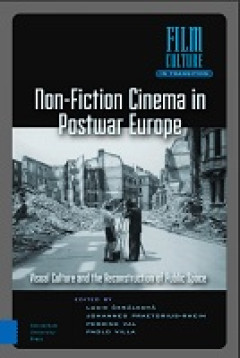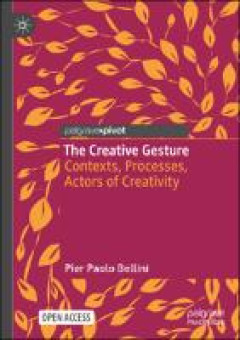Ditapis dengan

E-book Non-Fiction Cinema in Postwar Europe: Visual Culture and the Reconstru…
After WWII, cinema was everywhere: in movie theatres, public squares, factories, schools, trial courts, trains, museums, and political meetings. Seen today, documentaries and newsreels, as well as the amateur production, show the kaleidoscopic portrait of a changing Europe. How did these cinematic images contribute to shaping the new societies emerging from the ashes of war, both in the Western…
- Edisi
- -
- ISBN/ISSN
- 9789048556625
- Deskripsi Fisik
- 520 halaman
- Judul Seri
- -
- No. Panggil
- 778.534 CES n
E-book Qarakhanid Roads to China : A History of Sino-Turkic Relations
By the end of the first millennium CE, a vast portion of Central Eurasia was con-trolled by nomadic powers: the Sinicized Khitans (907–1125), who were later replaced by the Jurchens (1115–1234) and the Tanguts (1038–1227) in North and Northwest China; and the Turko-Islamic dynasties such as the Qarakhanids (840–1212), the Ghaznavids (977–1163) and the Saljuqs (1037–1194, and 1077–…
- Edisi
- -
- ISBN/ISSN
- 9789004510333
- Deskripsi Fisik
- 301 hlm
- Judul Seri
- -
- No. Panggil
- 909.04 DUT q
E-book Food Security, Right to Food, Ethics of Sustainability : Legal, Econom…
here is an inseparable link between healthy eating and respect for environmental balance, just as there is a growing awareness of the close relationship between eating habits and food production methods. A necessary transition towards sustainable farming and food systems can only be achieved through serious and thorough intervention by politics and law.Fro…
- Edisi
- -
- ISBN/ISSN
- 9788835155287
- Deskripsi Fisik
- 210 hlm
- Judul Seri
- -
- No. Panggil
- 363.7 CAL f

E-book The Creative Gesture: Contexts, Processes, Actors of Creativity
This open access book offers a concise overview of the theories constructed within the various human sciences around the theme of creativity as a symbolic capacity to link things together: it manifests itself when the individual endowed with a certain type of intelligence encounters cultural and social conditions that enable them to develop that capacity to the maximum, rather than inhibiting i…
- Edisi
- -
- ISBN/ISSN
- -
- Deskripsi Fisik
- 136 halaman
- Judul Seri
- -
- No. Panggil
- 301 BEL t 002902-eB-0122
E-book The internet myth
The Internet is broken and Paolo Bory knows how we got here. In a powerful book based on original research, Bory carefully documents the myths, imaginaries, and ideologies that shaped the material and cultural history of the Internet. As important as this book is to understand our shattered digital world, it is essential for those who would fix it.’ — Vincent Mosco, author of The Smart City…
- Edisi
- -
- ISBN/ISSN
- -
- Deskripsi Fisik
- 169 hlm
- Judul Seri
- -
- No. Panggil
- 004.678 BOR t
 Karya Umum
Karya Umum  Filsafat
Filsafat  Agama
Agama  Ilmu-ilmu Sosial
Ilmu-ilmu Sosial  Bahasa
Bahasa  Ilmu-ilmu Murni
Ilmu-ilmu Murni  Ilmu-ilmu Terapan
Ilmu-ilmu Terapan  Kesenian, Hiburan, dan Olahraga
Kesenian, Hiburan, dan Olahraga  Kesusastraan
Kesusastraan  Geografi dan Sejarah
Geografi dan Sejarah